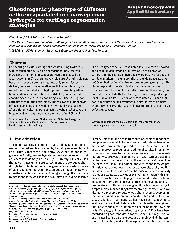摘要
Highly hydrated hydrogels can better mimic the chemical and physical environments of cartilage extracellular matrix (ECM) and therefroe are ideal biomaterials for cartilage regeneration. Besides the traditional hydrogels which have been used in cartilage repair, some hydrogels with new structures and properties are also introduced in this article, including mechanically strong hydrogels and hydrogels containing functional proteins or peptide domains. First, hydrogels with smart response to pH, temperature, ions, stresses and bioactive factors are thus discussed. Second, self-assembled hydrogels containing peptide domains which present a novel advance in terms of their structural similarity to natural ECM of cartilage and their bioactivity to cartilage regeneration are illustrated. Some hydrogels can be crosslinked by interaction between or among self-assembled alpha-helix structures, and others may self-assemble to form nanofibrous structures. DNA sequences and molecules have also been used to design DNA based hydrogels. The hydrogel filled porous scaffolds, on the other hand, can maintain both the good mechanical strength of the hard scaffolds and the good biocompatibility of the soft hydrogels, thus behaved better performance in cartilage regeneration. The injectable hydrogel/microcarriers composites with suitably mechanical properties and degradation time are another type of appealing scaffolds having the in vivo culture environment for the delivered cells, minimal invasion and low cost of surgical procedures. Moreover, mesenchymal stem cells (MSCs) have shown great promise in cartilage repair, thus can be encapsulated into the hydrogels and differentiate into the chondrocytes in situ. For this sense, stimulating factors such as growth factors, genes and hydrostatic or dynamic compression may be simultaneously applied to accelerate cartilage regeneration.
- 出版日期2009-10
- 单位浙江大学
